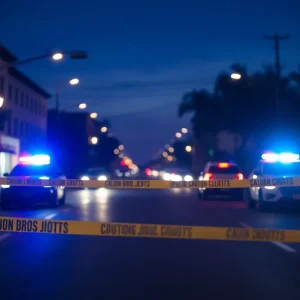Changes in Diversity Statistics at Elite Massachusetts Colleges
In a significant shift, both Amherst College and Tufts University in Massachusetts have reported a drop in Black student enrollment for the incoming freshman class this year. This is the first set of figures released after last summer’s landmark decision by the Supreme Court, which put a stop to race-conscious admissions. This change has raised serious concerns about how *diversity on campus* could be impacted moving forward.
A Closer Look at the Numbers
So, what do the numbers say? At Amherst College, the percentage of Black students dropped dramatically from 11% last year to just 3% this year. That’s an eight-point plunge that some experts fear might foreshadow a broader trend across selective colleges. The statistics didn’t stop there—Hispanic students also saw a dip from 12% to 8%. Meanwhile, the population of white students increased substantially, jumping from 33% to 39%. Asian American students saw a small rise, from 18% to 20%.
Tufts University reported similar trends. The incoming freshman class of 2028 saw Black student enrollment decline from 7.3% to 4.7%. White student enrollment, on the other hand, increased from 46.8% to 49.3%. There was also a slight decrease in Asian American students, dropping from 20.3% to 19.7%.
Effects Beyond the Campus
This fallout from the Supreme Court’s decision doesn’t just affect the colleges themselves. Critics warn that a lack of diversity in higher education can lead to *long-lasting societal implications*. It’s not just about who’s in the classroom; it’s about shaping future leaders and innovators—many of whom come from historically under-represented groups. The concern is real, and many educators are grappling with how to maintain a diverse student body during this sensitive time.
What Other Schools Are Seeing
The clue that this might not only be a one-off situation came recently from the Massachusetts Institute of Technology (MIT), which also released numbers showing a sharp decline in students from historically under-represented racial and ethnic groups. For instance, MIT reported a drop in Black student enrollment from 15% to 5%, while Hispanic and Latino students fell from 16% to 11%. These statistics underline what seems to be a *larger trend* affecting a number of prestigious academic institutions.
What Are the Schools Saying?
The dean of admissions at Amherst College, Matthew L. McGann, didn’t sugarcoat things. He acknowledged that due to the Supreme Court’s ruling, the incoming class is indeed less racially diverse compared to previous years. This transparent communication highlights the *understanding and awareness* these institutions have of the situation, yet it also begs the question of what can be done to rectify it.
And while we wait for institutions like Harvard University and the University of North Carolina to release their numbers, the education landscape in America is definitely under the microscope. Everyone is keenly aware that these figures could set a precedent—and perhaps show a new normal in student diversity at elite institutions might be unfolding.
Moving Forward
With the stakes so high, it’s clear that both the schools and students alike will need to navigate these changes carefully. As for now, these statistics serve as a *wake-up call* for many in academia about the importance of maintaining a diverse, inclusive environment. It’s going to be a challenging road ahead, but the conversations initiated by these changes could eventually lead to new solutions and pathways toward improving diversity in education once again.







